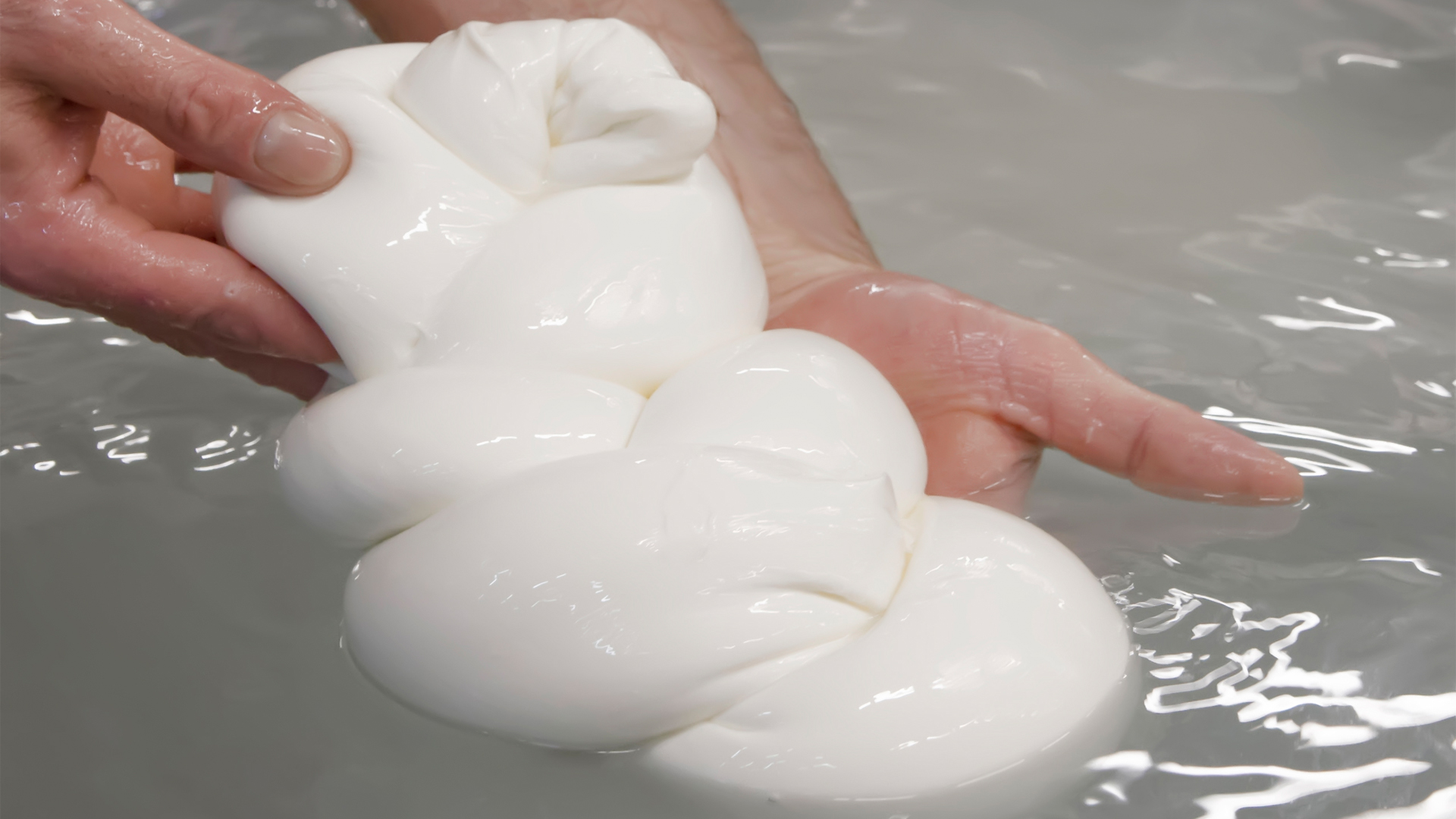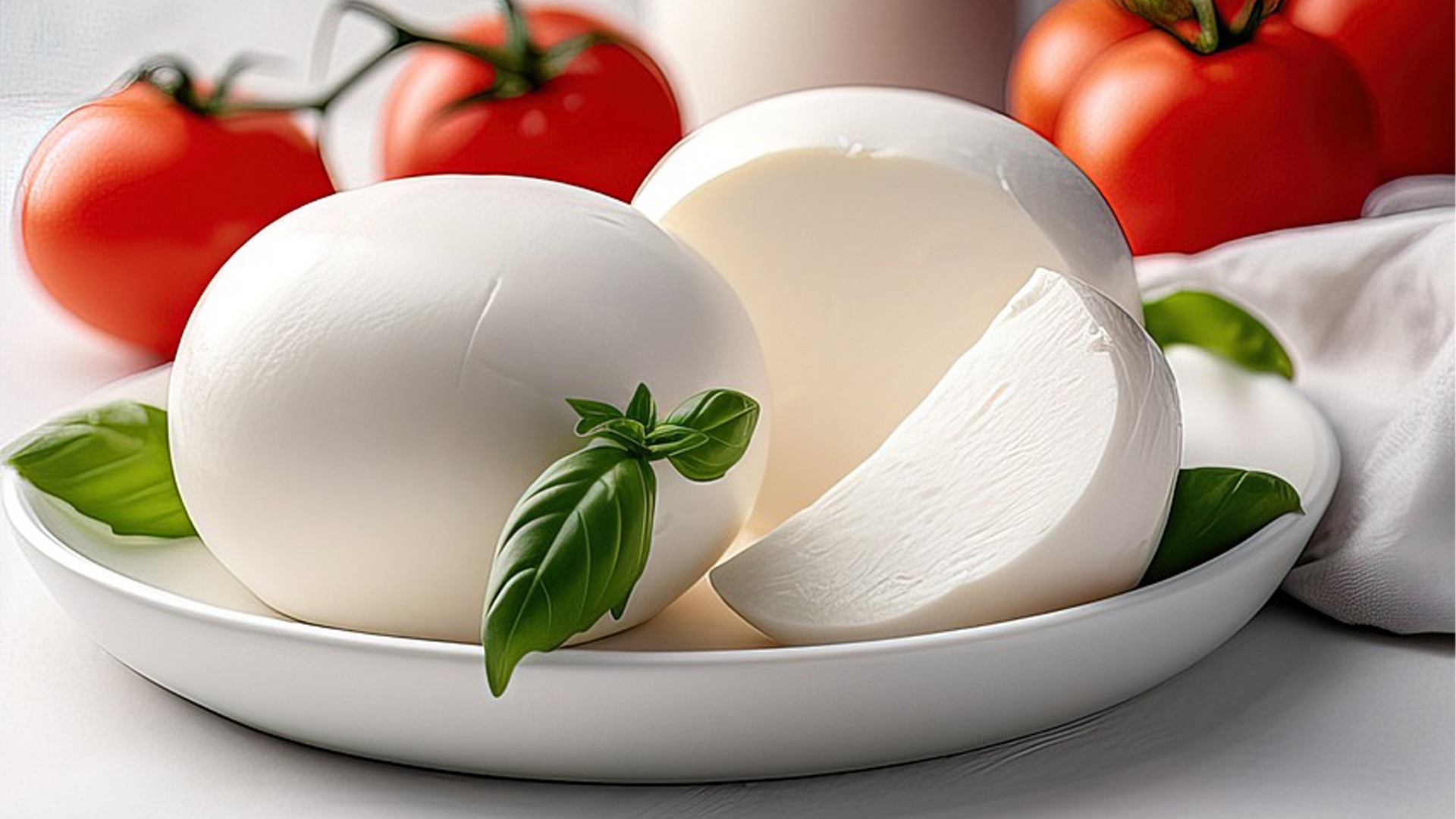Italy’s Mozzarella di Bufala, or Mozzarella made with domesticated water buffalo’s milk, is one of its crowning culinary achievements. Mainly produced in the southern region of Campania, home to the bustling city of Naples, the porcelain white cheese can be deliciously served in a Caprese salad, finely chopped up into summer pastas, and of course, dolloped onto a Neapolitan pizza. In 1996, the cheese was certified as a Protected Designation of Origin (PDO), a European Union label that states that it may only be produced in the regions of Campania, Lazio, Puglia, and Molise.
The History of Mozzarella di Bufala

The word mozzarella itself is a diminutive form of the word mozzare, which derives from Neapolitan dialect and means to “cut off.” The earliest historical reference to mozzarella dates to the 12th century, when Benedictine monks of the San Lorenzo Monastery in Capua, a town in Campania, are said to have prepared a cow’s milk cheese called mozza. In the 13th century, there are records of Campania dairy farmers making mozzarella cheese from buffalo’s milk, which at the time was considered cheaper to cow or goat’s milk.
As a species, the water buffalo originated in Asia and has been domesticated by humans as early as 3000 BC. It was introduced to Italy over a 1,000 years ago during the Arab invasion of Sicily in the eighth century AD. These animals’ strength and ability to cross marshy land without sinking into it make them valuable tools for plowing the land. The water buffalo was introduced to Campania when the Arabs were conquered by the Normans in the 11th century.
How to Make Mozzarella di Bufala

Mozzarella di Bufala farmers only have 60 hours to begin the mozzarella-making process once they have milked the water buffalo. Once the milk is collected, it is heated to a temperature ranging between 91 and 102 degrees Fahrenheit. As the milk coagulates, it is mixed with boiling water which makes the cheese incredibly stretchy– think of Laffy Taffy.
Cheesemakers then begin to “cut” the cheese into balls before placing it in a cold bath that hardens the exterior while keeping the interior soft. Hand-made mozzarella will have a distinct “V” shape pattern that shows where the cheese makers shaped it by hand. The individual mozzarellas are then placed in a salt bath before being packaged and shipped.
Asia London Palomba
Asia London Palomba is a trilingual freelance journalist from Rome, Italy. In the past, her work on culture, travel, and history has been published in The Boston Globe, Atlas Obscura, The Christian Science Monitor, and Grub Street, New York Magazine's food section. In her free time, Asia enjoys traveling home to Italy to spend time with family and friends, drinking Hugo Spritzes, and making her nonna's homemade cavatelli.

